Engine Coolant
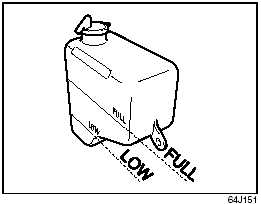
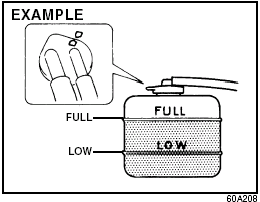
Selection of Coolant
To maintain optimum performance and durability of your engine, use SUZUKI Genuine Coolant or equivalent.
This type of coolant is best for your cooling
system as it:
• Helps maintain proper engine temperature.
• Gives proper protection against freezing and boiling.
• Gives proper protection against corrosion and rust.
Failure to use the proper coolant can damage your cooling system. Your authorized SUZUKI dealer can help you select the proper coolant.
CAUTION:
To avoid damaging your cooling system:
• Always use a high quality ethylene
glycol base phosphate type coolant
diluted with distilled water at the
correct mixture concentration.
• Make sure that the proper mix is 50/ 50 coolant to distilled water and in no case higher than 70/30. Concentrations greater than 70/30 coolant to distilled water will cause overheating conditions.
• Do not use straight coolant nor plain water.
• Do not add extra inhibitors or additives.
They may not be compatible with your cooling system.
• Do not mix different types of base coolants. Doing so may result in accelerated seal wear and/or the possibility of severe overheating and extensive engine/automatic transmission damage.
Engine Coolant Level Check
Check the engine coolant level at the reserve tank, not at the radiator. With the engine cool, the engine coolant level should be between the “FULL” and “LOW” marks.
Adding Engine Coolant
If the engine coolant level is below the “LOW” mark, more engine coolant should be added. Remove the reserve tank cap and add engine coolant until the reserve tank level reaches the “FULL” mark. Never fill the reserve tank above the “FULL” mark.
CAUTION:
• The mixture you use should contain
50% concentration of antifreeze.
• If the lowest ambient temperature in your area is expected to be –35 °C (–31°F) or below, use higher concentrations up to 60% following the instructions on the antifreeze container.
• When putting the cap on the reserve tank, line up the arrow on the cap and the arrow on the tank.
Failure to follow this can result in coolant leakage.
 WARNING:
WARNING:
Engine coolant is harmful or fatal if
swallowed or inhaled. Do not drink
antifreeze or coolant solution. If swallowed,
do not induce vomiting. Immediately
contact a poison control
center or a physician. Avoid inhaling
mist or hot vapors; if inhaled, remove
to fresh air. If coolant gets in eyes,
flush eyes with water and seek medical
attention. Wash thoroughly after
handling. Solution can be poisonous
to animals. Keep out of the reach of
children and animals.
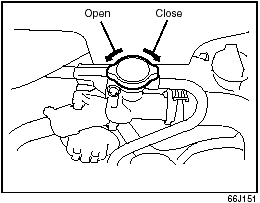
Engine Coolant Replacement
1) When the engine is cool, remove the radiator cap by turning it slowly to the left until a “stop” is felt. Do not press down while turning the cap. Wait until any pressure is released, then press down on the cap and continue turning it to the left.
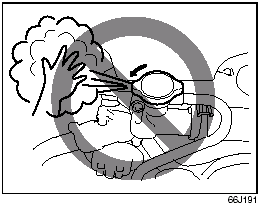
 WARNING:
WARNING:
It is hazardous to remove the radiator
cap when the engine coolant temperature
is high, because scalding fluid
and steam may be blown out under
pressure. Wait until the engine coolant
temperature has lowered before
removing the cap.
2) Remove the reservoir by lifting it up, and drain the reservoir completely.
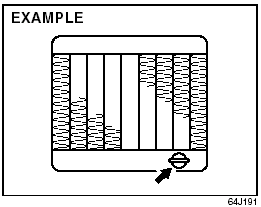
3) Loosen the drain plug attached to the lower part of the radiator and drain the engine coolant into a suitable container.
4) Reinstall the reservoir and fill it with engine coolant to the “FULL” line.
5) Tighten the drain plug on the radiator, fill the radiator with engine coolant and install the radiator cap.
6) After filling, let the engine idle for about 2 – 3 minutes to get rid of air in the cooling system. Then, stop the engine.
7) Check the engine coolant level in the radiator again. If the level has gone down, add more engine coolant.
CAUTION:
The engine coolant must be replaced
with the vehicle on level ground.
See also:
Catalytic Converter
Catalytic Converter
The purpose of the catalytic converter is to
minimize the amount of harmful pollutants
in your vehicle’s exhaust. Use of leaded
fuel in vehicles equipped with catalytic
co ...
Seat Belts and Child Restraint Systems
WARNING:
An air bag supplements, or adds to,
the frontal crash protection offered
by seat belts. The driver and all passengers
must be properly restrained
by wearing seat belts at all times,
...
Trunk Light (SX4 SEDAN)
Trunk Light (SX4 SEDAN)
When you open the trunk lid, the trunk light
comes on and remains on as long as you
keep the lid open.
CAUTION:
Do not leave the trunk lid open for a
long time, or the ...
